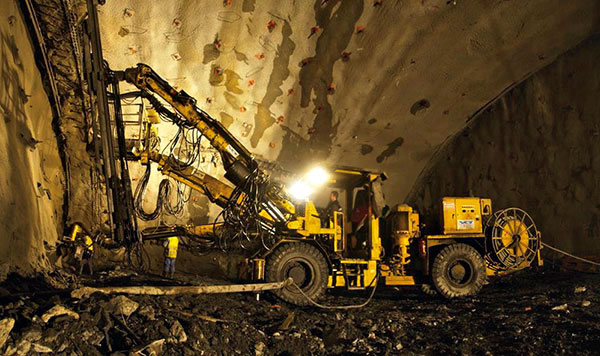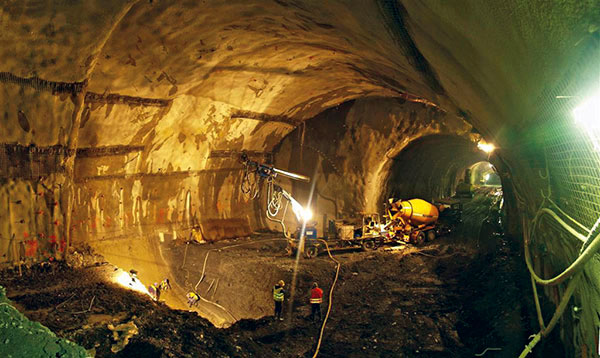


Excavation of Large-Scale Caverns in Difficult Ground Conditions
Sentvid Tunnel, Sentvid Caverns, Ljubljana, Slovenia
The flow of traffic in the course of the transalpine cross-border trade from Austria to Slovenia starts in the south of Austria near the city of Villach. From there, traffic continues through the Karawanken Mountain Range that is part of the Southern Limestone Alps to the foothills to Ljubljana, the capital city of Slovenia.
The last bottleneck in this supra-regional traffic connection has now been eliminated by the construction of the Sentvid Tunnel. This tunnel links the Karawanken Highway from the north and the Ljubljana city bypass. As a result, the connection from Ljubljana’s highway ring road to traffic destinations in the southeast such as Trieste, Rijeka, and Zagreb, has now been completed.
To enhance the transport connections in the city area, the Sentvid Tunnel is also linked to the highly frequented access road “Celovska Cesta”. This link road to the underground highway is accomplished by means of two one-way ramp tunnels that are constructed in two caverns with a maximum cross-section of 360m². Due to difficult ground conditions and the proximity of the existing tunnel sections, large deformations were expected in the cavern areas.
Based on lessons learned during the construction of the Sentvid Tunnel, the support design of the caverns was modified. The original radial bolting concept using IBO-Self-drilling Anchors (ultimate load: 320kN) was replaced by a more efficient rock reinforcement system. Using this system in combination with AT – LSC Elements (Lining Stress Controllers), the expected large rock deformations were controlled to ensure the integrity of the shotcrete lining.
The designer considered the following requirements for the alternative rock reinforcement system: rock bolting works should be easily accommodated by the personnel on-site; a proper bond between rock bolt and rock mass had to be guaranteed, and the minimum breaking load of each rock bolt should be 400kN. When looking for the proper rock reinforcement system able to comply with the design requirements, DSI’s IBI-Self-drilling Anchor system was the logical choice.
This system has the advantage that its installation principle is similar to IBO-Self-Drilling Anchors; in addition, the use of post-grouting couplings allows the complete injection of the annulus between the anchor and the rock mass. The criterion of a minimum breaking load of 400kN was fulfilled using the IBI R 38/51 system with a yield load of 420kN.
To verify the performance characteristics of this system, which was new on the Slovenian market, the project owner required that a series of tests be conducted. In the course of these tests, IBI – Self-drilling Anchors were installed into the tunnel face. It turned out that the development of an optimum grout body was warranted by multiple re-injections at high pressure (approx. 40 bar). Subsequently, the IBI-anchor system was approved by the owner for on-site usage.
The outer lining of the caverns was completed in the fall of 2007 without any problems. By installing AT – LSC-Elements into deformation gaps of the shotcrete lining, damage to the lining due to large rock mass deformations was prevented and an optimum utilization of the load-bearing capacity was ensured. The application of IBI-Self-drilling Anchors for systematic tunnel reinforcement significantly contributed to the successful construction of the large-scale Sentvid Caverns.
